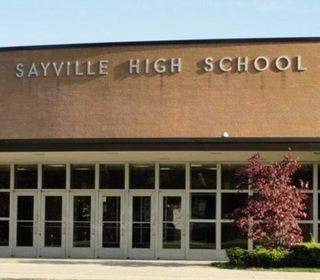
Guest Article; The Brave Art Teacher: Making the Contemporary High School Art Class Relevant to Your Students By Jodi Patterson

The Brave Art Teacher: Making the Contemporary High School Art Class Relevant to Your Students
By Jodi Patterson
We teach in contemporary, not modern times. This realization requires a transformative pedagogical approach to the teaching of high school art. The term “modern” leads people to believe that whatever stems from it is cutting-edge and alive. However, in art terms, modern is of the past — and contemporary is of today.
For instance, Matisse and Picasso, two “modern” artists who work in different “styles” are no longer at the cutting edge of contemporary culture. While both men were art mavericks in their own right and spoke to the issues of their times, they are not our contemporaries — and dare I say — they are largely of little relevance to contemporary teenagers. Of course, I do not advocate that we entirely erase their (or the canon’s) contribution to art’s history – but I surely don’t see them as the most inspiring artists for teens to be exposed to. There are plenty of contemporary artists who talk about the critical issues of today such as sustainability, body image, spirit, consumption; who use contemporary media such as video, sound, and installation; and who make art for public and/or personal reasons. Your high school art students see artists such as these as much more relevant to their lives.
Henry Warwick, an interdisciplinary artist and professor, contextualizes “culture today” as in an “eternal contemporary” condition – a sort of schizoid hypermodernity void of the lulls that past eras have provided. For example, between approximately 600 and 1400 in Western Europe, art, music, and fashion changed little during a time of absolute church authority. The era between the 1400’s to the mid 1800’s showed little change at first. However, as European (and later, American) society changed its energy base from solar and renewable sources (such as wind, water, human and animal power) to exponentially more powerful fossil or nonrenewable fuels (first coal, then oil and natural gas and nuclear), it naturally accelerated the exchange of signifiers of social change. From there, we jump into the Industrial Age to the Technological to the Conceptual Age and smack into the Eternal Contemporary. This era’s mode makes sense if you think about how quickly fashion comes in and out of favor: shoes, music, make-up, news, politics, cultural musings, technology and industry quickly change.
In other words, extended eras of living are gone as the contemporary is eternally moving – and our curriculum must move too! Within an eternal contemporary construct, we cannot expect last school year’s curriculum to be relevant to this year’s students. High school art teachers can embrace the challenge of the “new” and explore the plethora of art materials, ideas and artists available to students about contemporary art and the people/world that produces it. After all, isn’t exploring what artists do?
Jodi Patterson has over twenty years of art teaching experience at the high school and university levels. She is an artist, author and teacher who wrote and illustrated a little life manual titled “Tips for Sunshine: Life After High School.” This book helps young adults adjust to the rigors of life on their own, and the website http://www.tips4sunshine.com offers helpful links to ideas discussed in the book.
Jodi also recently released the text titled “Brave Art & Teens: A Primer for the New High School Art Teacher.” Please visit her website for more links on art education and how to buy the book at a discounted rate via: http://www.braveart.info.
Article Source: https://EzineArticles.com/expert/Jodi_Patterson/1133347
Discover more from Sayville Alumni Association, Inc.
Subscribe to get the latest posts sent to your email.

No Comments